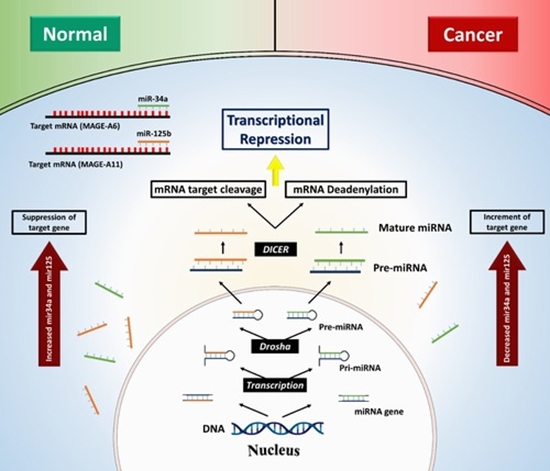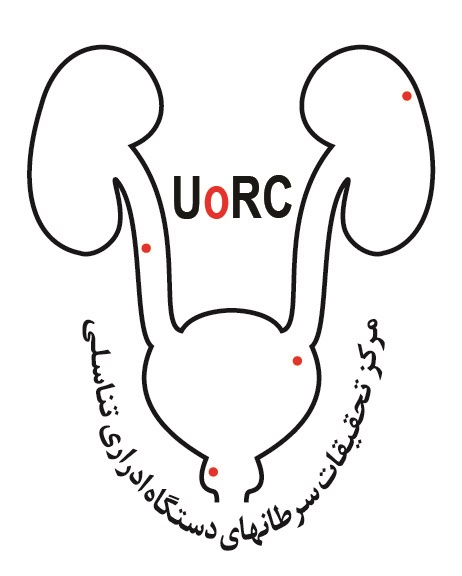Molecular Characteristics of Bladder Tumor: Increased Gene Expression of MAGE-A6 and MAGE-A11 with Decreased MicroRNA-34a and MicroRNA-125b

Bladder cancer is recognized as one of the top ten most common cancers worldwide. Activation of oncogenes, inactivation of tumor suppressor genes, and dysregulation of androgen signaling pathways are three major pathophysiological causes in the development of bladder tumors. Discovering potential biomarkers is required for the management and immunotherapy of bladder cancer. Melanoma-associated antigen (MAGE)-A6 and MAGE-A11 are two cancer-testis antigens that are potential coregulators of androgen receptors. MicroRNAs, especially miR-34a and miR-125b are two important tumor suppressors that play a critical role in regulating different signaling pathways and inhibiting tumor development. Twenty-nine surgical tissue biopsies were collected from patients with no preoperative chemotherapy or radiotherapy (26 males and, 3 females, mean age±SD: 62.4±13.3 years). Seventeen adjacent uninvolved tissues with no abnormalities upon histological examination were considered normal controls (14 males and, 3 females, mean age±SD: 64.2±7.4 years) . Quantitative PCR was performed to evaluate the gene expression level of MAGE-A6, MAGE-A11, miR-34a, and miR-125b in bladder cancer biopsies.
MAGE-A6 and MAGE-A11 expressions were significantly increased in bladder tumors compared with normal tissues. However, the expression levels of miR-34a and miR-125b were significantly downregulated in bladder tumor tissues. Interestingly, the expression level of all these genes was significantly associated with tumor grade, pathological stage (pT), and muscular invasion.
MAGE-A6 and MAGE-A11 can be considered potential markers for the diagnosis and immunotherapy of bladder tumors. Furthermore, the modulation of miR-34a and miR-125b gene expression in association with increased MAGE-A6 and MAGE-A11 genes could open a new horizon in the improvement of bladder cancer.




ارسال نظر